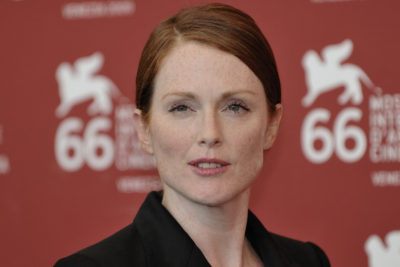
“Where do I belong?”
These are the words that Rose, a deaf girl from 1927 New Jersey, asks herself in Todd Haynes’ new film “Wonderstruck” — or, more accurately, these are the words that she scribbles onto a piece of paper before folding it into an origami boat and tossing it on top of the Willamette Meteorite in the American Museum of Natural History.
The film is undeniably “out there.” But what else could be expected from director Haynes, the creative genius behind “Far From Heaven” and “Velvet Goldmine”? The film involves an inundation of quirkiness and the artsiest possible camera angles that has Haynes’ name written all over it.
Based on the illustrated novel by Brian Selznick (perhaps better known for his other novel “The Invention of Hugo Cabret”), “Wonderstruck” walks a fine line between originality and cliché.
Its plot centers around two characters’ journeys to New York City — quite possibly the most overused trope in coming-of-age stories. However, these characters exist in separate-but-parallel narratives — more specifically, in separate eras, which Haynes deftly explores in his cinematography.
The story begins with an unusual dream sequence montage, featuring an uncomfortably large amount of wolves to introduce protagonist number one: an alienated and David Bowie-obsessed boy named Ben (Oakes Fegley).
It’s soon revealed that the source of Ben’s angst is the unfortunate yet stereotypical death of his mother, which prompts him to escape to New York City in search of his estranged father. Apparently, a child riding the bus alone halfway across the country from Minnesota wouldn’t raise any red flags in 1977.
He’s also looking for the mysterious Cabinet of Wonders, the historical prelude to modern museums that’s depicted in a strange vintage book with which he’s oddly obsessed.
And then there is Rose (Millicent Simmonds), the aforementioned outcast with a flair for the dramatic. She lives in the era of silent film and the glamour of the Roaring ‘20s, and prefers to spend her time building paper models of the New York skyline. When her father suggests that she spend her time learning valuable skills instead of building models, she runs away to the city.
If these storylines sound like twists on concepts that remain trite and overused, that’s because they are.
Even so, there are many things that “Wonderstruck” does very, very well, the most notable of which is implementation of character diversity. Yes, the leads are both white — but they’re also both deaf.
Rose is born with a lack of hearing, which Haynes explores through the absence of in-scene audio. Instead, audiences are met with an orchestral accompaniment that is incredibly effective in establishing the mood.
Scenes in Rose’s perspective are also filmed in black and white, another stylistic decision that achieved its beautiful purpose of creating a literal silent film for the audience.
Ben, on the other hand, loses his hearing after being struck by lightning. However, his narrative still features color and sound, providing a nice relief and contrast to Rose’s story.
Through Ben’s narrative, viewers get wonderful lens flares and sweeping, colorfully aesthetic shots at full force, a beauty which even rivals Haynes’ critically-acclaimed work in “Carol.”
But there is also forced, unnecessary conflict, irrelevant background characters that receive too much screen time and a chase sequence that drags on seemingly forever.
Despite these clichés and several unfortunate aspects of the narrative (for which Selznick shares some of the blame), “Wonderstruck” was ultimately heartwarming and uplifting.
The focus on platonic and sibling relationships is refreshing in contrast to those of the romantic variety — and audiences my find themselves shedding a few tears. It’s a powerful film, despite the fact that it can’t compete with the standards of Selznick’s other book-to-film masterpiece, “Hugo” (directed by Martin Scorsese).
The implementation of mirrored storylines was practically flawless, and their predictable intertwining is far from upsetting. It’s experimental film meets mainstream, and it’s surprising how nicely the two mesh.
Certainly, there’s room for improvement, but the film itself still has the capacity to strike with a fair amount of wonder.























































































































Ria • Oct 30, 2017 at 2:14 am
Showing two parallel, different timelines does prove difficult at times. And however much tropey, the movie sounds good enough to watch.